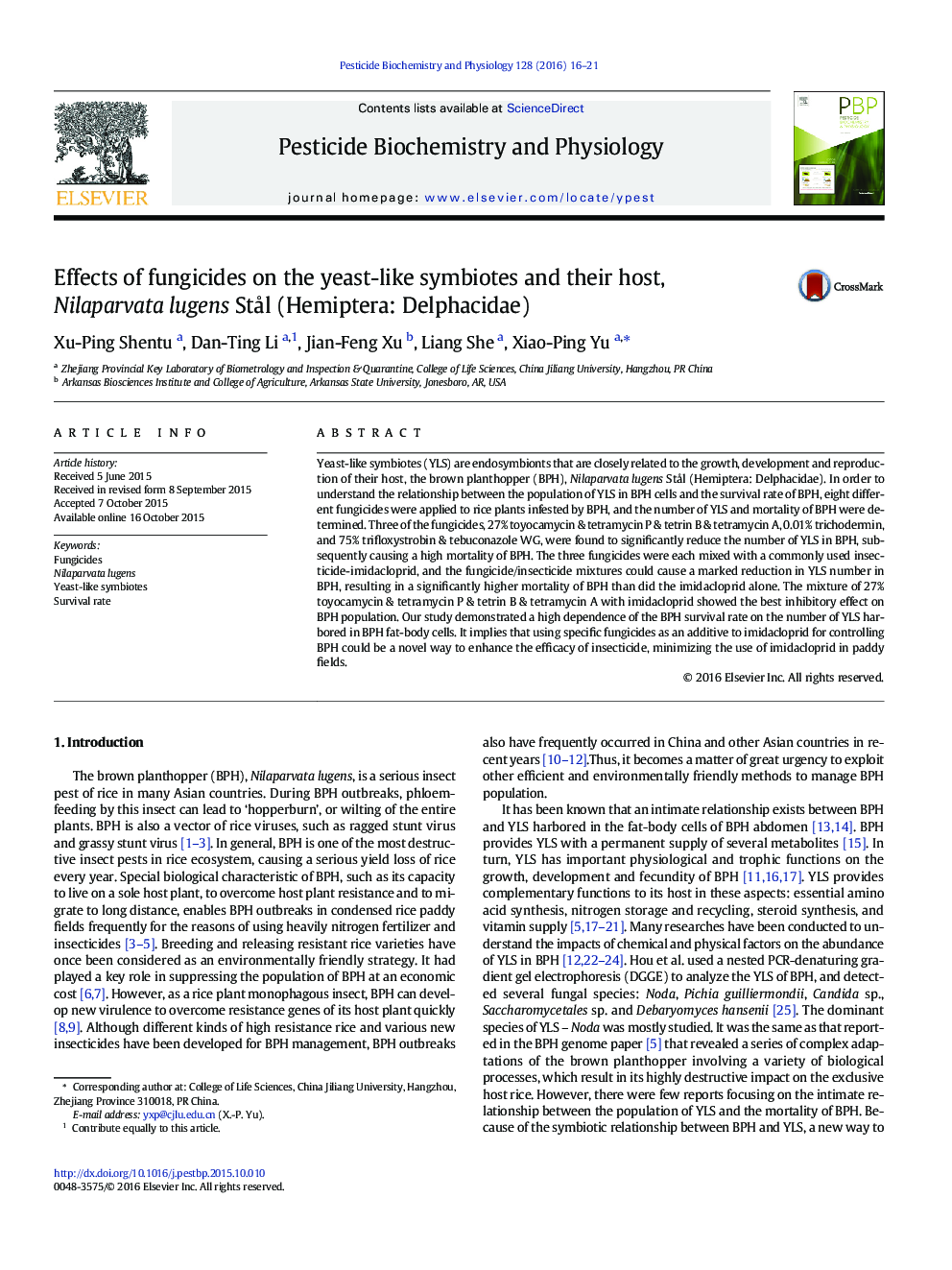| کد مقاله | کد نشریه | سال انتشار | مقاله انگلیسی | نسخه تمام متن |
|---|---|---|---|---|
| 2008982 | 1541771 | 2016 | 6 صفحه PDF | دانلود رایگان |
• This report focused on the intimate relationship between the population of YLS and the mortality of BPH.
• Three of the fungicides were found to significantly reduce the number of YLS in BPH, subsequently causing a high mortality of BPH.
• The fungicide/insecticide mixtures could cause a significantly higher mortality of BPH than did the imidacloprid alone.
• It implies that using the fungicide/insecticide mixtures could be a novel way to control BPH.
Yeast-like symbiotes (YLS) are endosymbionts that are closely related to the growth, development and reproduction of their host, the brown planthopper (BPH), Nilaparvata lugens Stål (Hemiptera: Delphacidae). In order to understand the relationship between the population of YLS in BPH cells and the survival rate of BPH, eight different fungicides were applied to rice plants infested by BPH, and the number of YLS and mortality of BPH were determined. Three of the fungicides, 27% toyocamycin & tetramycin P & tetrin B & tetramycin A, 0.01% trichodermin, and 75% trifloxystrobin & tebuconazole WG, were found to significantly reduce the number of YLS in BPH, subsequently causing a high mortality of BPH. The three fungicides were each mixed with a commonly used insecticide-imidacloprid, and the fungicide/insecticide mixtures could cause a marked reduction in YLS number in BPH, resulting in a significantly higher mortality of BPH than did the imidacloprid alone. The mixture of 27% toyocamycin & tetramycin P & tetrin B & tetramycin A with imidacloprid showed the best inhibitory effect on BPH population. Our study demonstrated a high dependence of the BPH survival rate on the number of YLS harbored in BPH fat-body cells. It implies that using specific fungicides as an additive to imidacloprid for controlling BPH could be a novel way to enhance the efficacy of insecticide, minimizing the use of imidacloprid in paddy fields.
Three fungicide/insecticide mixtures could cause a marked reduction in the density of YLS in BPH.Figure optionsDownload as PowerPoint slide
Journal: Pesticide Biochemistry and Physiology - Volume 128, March 2016, Pages 16–21
